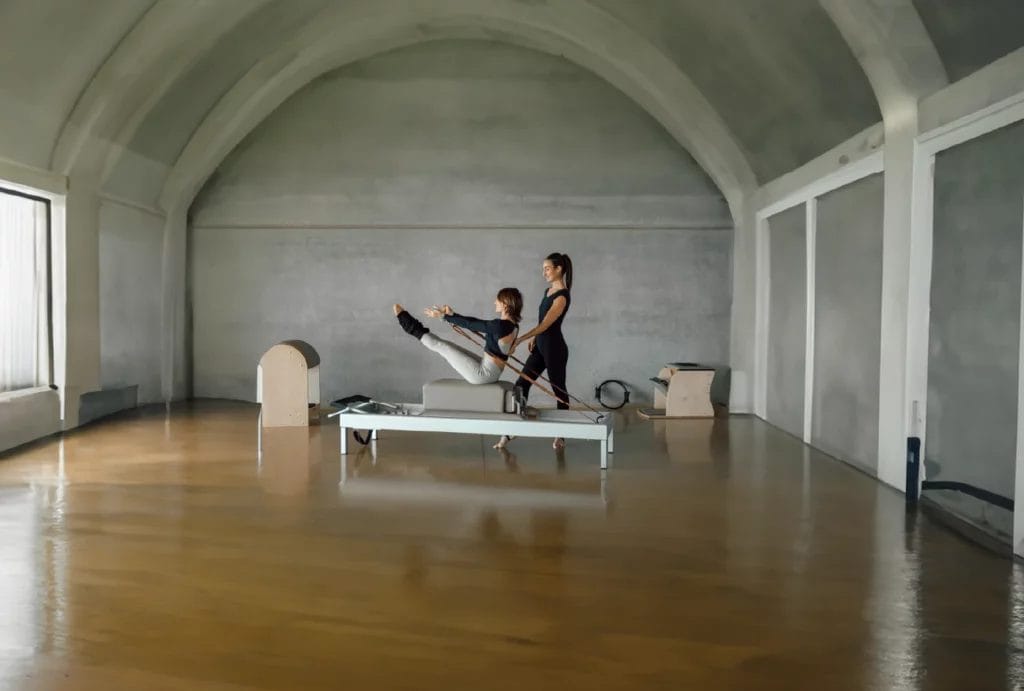Pilates: not just for princesses and celebrities. In recent years, the exercise program has experienced a resurgence in popularity, along with a shift away from its previous “Pilates princess” image.
According to Statista, nearly 12 million people participated in Pilates in 2023 – 15% more than in 2022. Various reports list Reformers Pilates as one of the fastest-growing fitness trends. If you’ve thought about becoming a Pilates instructor, now is the perfect time!
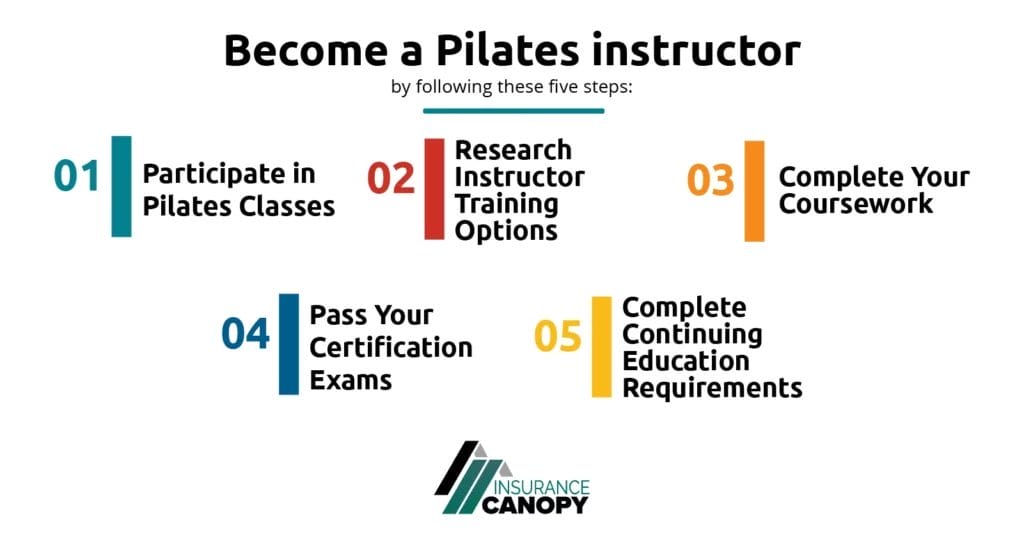
1. Participate in Pilates Classes
Videos of “gym-bros,” bodybuilders, and athletes getting humbled by a single Pilates class have received millions of views online, yet Pilates’ difficulty is still frequently underestimated.
This is one reason to take classes before you decide to become a Pilates instructor. Another is to find out if Pilates is for you, and which types you enjoy the most! It allows you to familiarize yourself with the different apparatus and styles to decide what kind of instructor you want to be.
You may also need student experience first to meet Pilates instructor training programs’ prerequisites.
Pro tip: Many Pilates instructors are former Pilates students, dancers, or yogis.

2. Research Pilates Instructor Trainings
The next step in the Pilates certification process is research. Decide what kind of Pilates you want to teach and learn what teacher training options are available and accessible to you.
Pilates Instructor Types
The most common Pilates instructor certifications are Mat, Reformer, or Comprehensive.
- Mat Pilates – Basic Pilates performed on a yoga mat or flat surface using primarily the body for resistance
- Reformer Pilates – Pilates that uses an elevated machine called a Reformer, which uses straps for the hands and feet, along with springs for movement and resistance
- Comprehensive Pilates – Pilates that incorporates all student experience levels and all the machines (mats, Reformers, Trapeze Tables/Cadillac Reformers, Chairs, Barrels, and more)

Pilates Instructor Programs
There is a wide range of Pilates instructor training programs, including those offered by local studios, popular chain studios, and nationwide teacher training organizations.
The downside of participating in a local studio’s teacher training is other facilities and locations may not recognize or accept those credentials. If you plan on teaching in one location or for that specific franchise only, then their branded training course is fine.
To maximize your versatility and have the ability to teach in multiple studios now or in the future, look for a nationally recognized instructor course.
Some of the most popular nationwide programs include:
Courses are typically offered in multiple formats (online, in-person), and all require some in-person practice and/or observation.
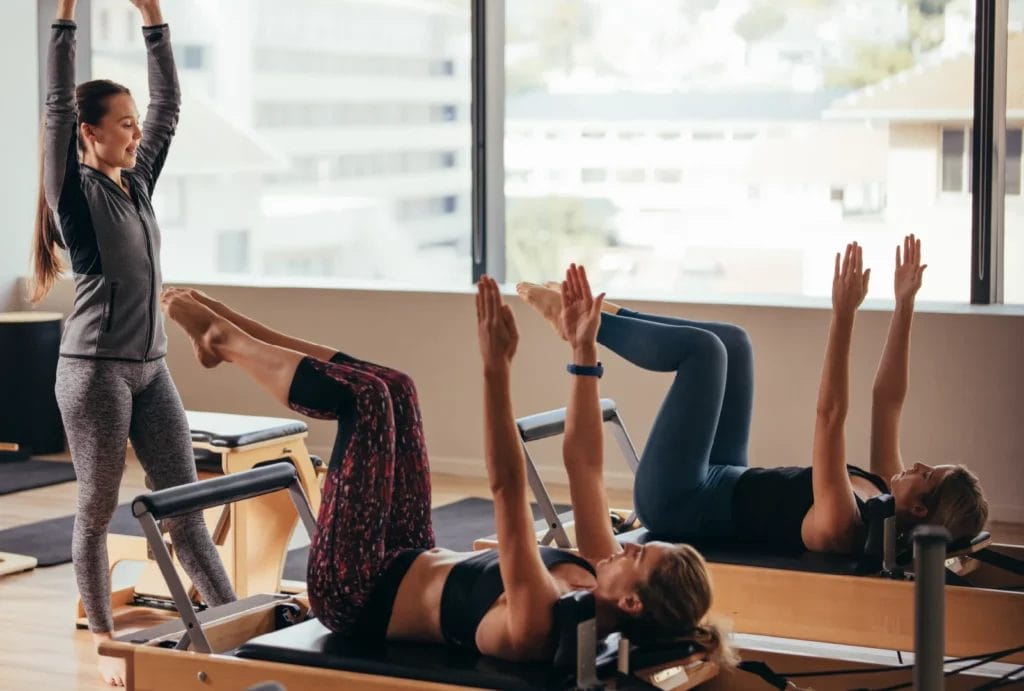
What to Consider When Choosing a Pilates Instructor Program
Some programs, like Balanced Body, offer modular teacher training where you can break your career development down into smaller, more manageable steps (and on your own timeline). Other programs also offer days-long, live intensive training designed to cover more in a shorter period of time.
Ultimately, it’s up to you which program works best for you! When choosing an instructor training, factors to consider include:
- Cost: What are the overall costs, and are there payment plans?
- Prerequisites: Are there prerequisite classes or hours of Pilates practice?
- Hours of coursework: How many hours of book work and physical practice do you need?
- Class formats: How structured is the course? How much is self-study vs instructor-led? How much can be completed virtually, and how many in-person hours are required?
- Time you have available to complete coursework: How much real-life time will it take you to finish 10, 20, 30+ hours of classwork or physical practice?
- Course credentials: Is it a national brand or a local studio?
Pro tip: Mat Pilates courses cost less and take less time than comprehensive courses. If you’re on a budget, you may be able to get a mat certification first so you can start teaching while continuing to pursue additional certs. Modular courses may also allow you to start student teaching before getting your final certificate.
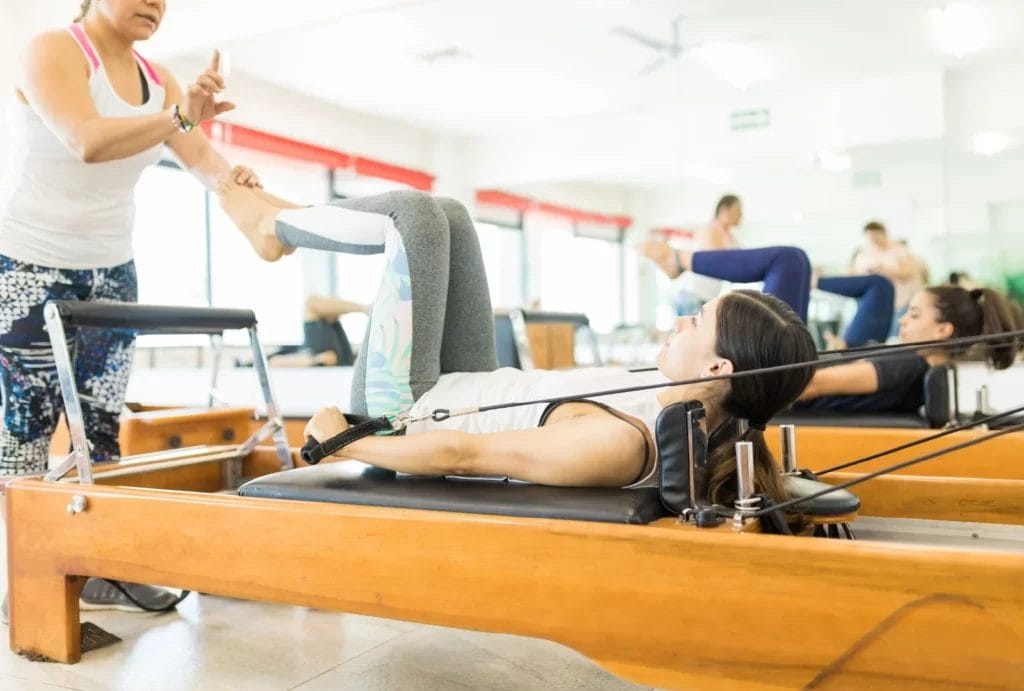
3. Complete Your Coursework
Once you’ve chosen and enrolled in a Pilates instructor training, it’s time to get studying.
An instructor certificate can take three or four months to two years to complete, depending on the type of certification and how much time you dedicate to training.
Mat Pilates courses typically require at least 95 hours of work. The exact number of hours required depends on the specific program.
- STOTT Pilates Intensive Mat Plus full course: 95 hours
- Balanced Body Mat Instructor Training full course: 134 hours
Reformer Pilates courses take at least 125 hours, with specific requirements again dependent on the organization.
- STOTT Intensive Reformer full course: 125 hours
- Balanced Body Reformer Instructor Training full course: 214 hours
- STOTT Matwork and Reformer full course: 310 hours
- Balanced Body Mat and Reformer Instructor Training full course: 332 hours
Comprehensive Pilates instructor certification programs take the longest, with a minimum of around 450 hours.
- Balanced Body Comprehensive Instructor Training full course: 520 hours
- Club Pilates Comprehensive Teacher Training: 500 hours
Every instructor course includes some combination of classroom-type learning (virtually or in person), written work or tests, physical practice or studio hours, observation, physical review, and student teaching.
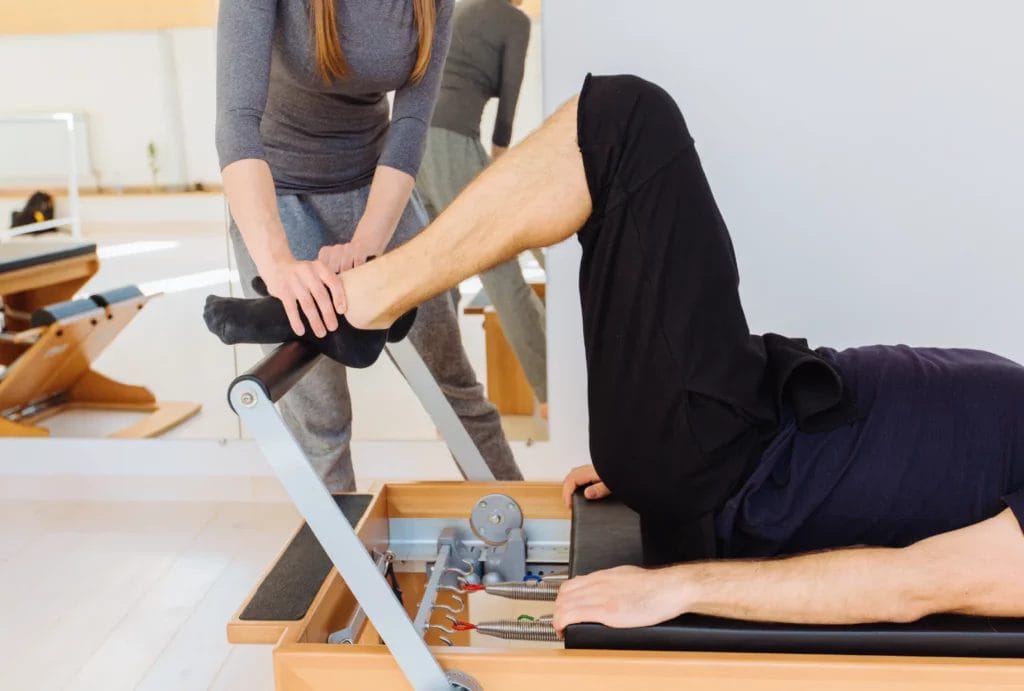
4. Pass Your Certification Exam(s)
Most Pilates instructor trainings include a written and a practical test at the end of training. To get your certificate of completion you must pass both exams.
Many, if not most, gyms and studios will accept one of these nationally-recognized Pilates instructor certificates. There’s also the chance some facilities will want you to have a National Pilates Certification Program (NPCP) certification.
The NPCP is not a teacher training program. It is a certification process that requires you to pass their NCCA (National Commission for Certifying Agencies)-accredited exam.
To take this NPCP certification exam, you must be at least 18 years old and have successfully completed a comprehensive Pilates teacher training course of at least 450 hours.
Pro tip: Most gyms/studios and some instructor certification programs also require you to have a valid Cardiopulmonary Resuscitation (CPR) and Automated External Defibrillator (AED) certification.
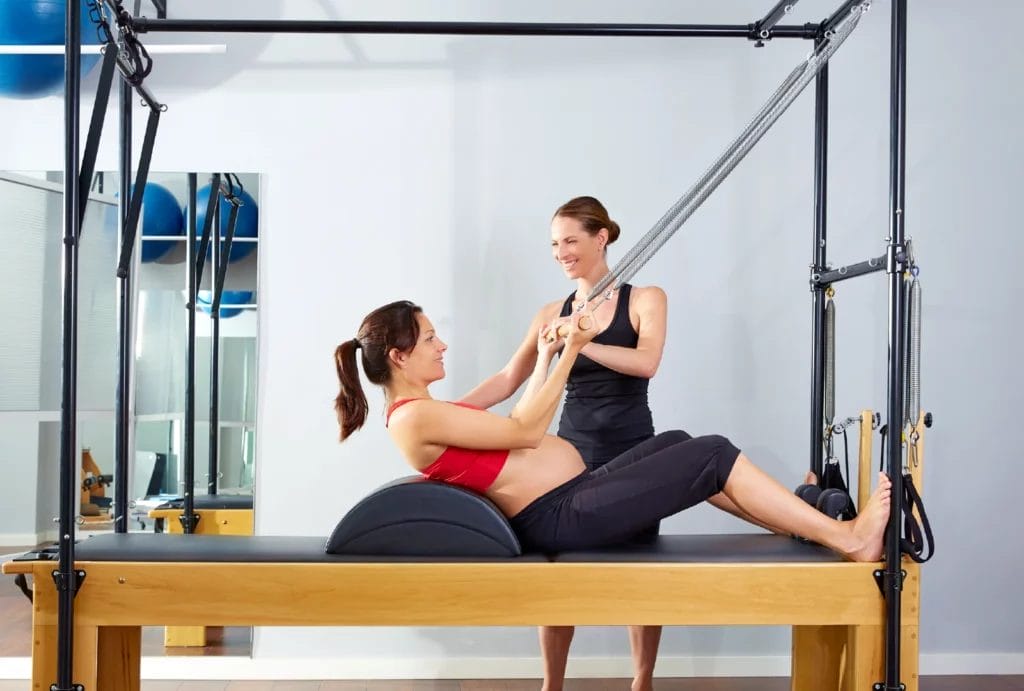
5. Complete Continuing Education Requirements
Some organizations (including the NPCP) require 16 credit hours of continuing education every two years to keep instructors’ status current.
These courses include topics like:
- Adaptions for special populations
- Adaptations for clients recovering from injury
- Advanced techniques
- Additional apparatus, like the Cadillac or Barrels
Check with your certification program to confirm their specific continuing education requirements.
Discover more ways to prepare for, protect, and grow your career in Pilates.
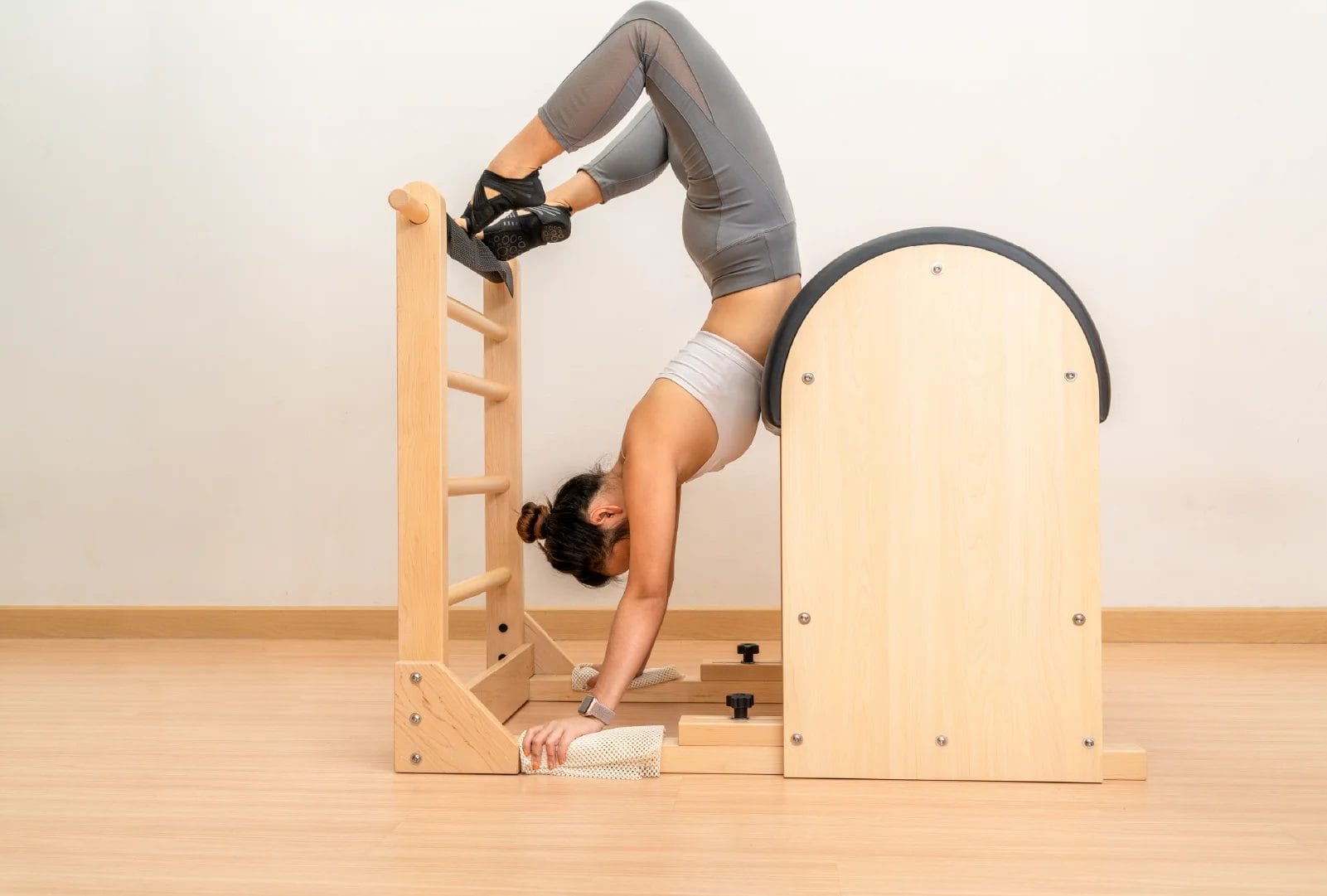
Costs to Become a Pilates Instructor
Pilates instructor certification costs range from $500 to $5000 depending on certification type, certification level, location, and class format.
For example, a Balanced Body Mat Pilates instructor certificate includes three modules: Mat 1, Mat 2, and Mat 3. Typical costs of each of these modules range from $470 to $675, with most listed at:
- Mat 1: $500 plus applicable fees ($50 for the manual and $10 for video streaming access)
- Mat 2: Between $500 and $575, plus fees
- Mat 3: Between $500 and $650, plus fees
In total, a Balanced Body Mat or Reformer instructor certificate will cost around $1,500. In contrast, a Club Pilates Comprehensive instructor cert (which includes training on all the Pilates apparatus) costs $4,995.
Based on the class listings from the most popular national Pilates instructor programs, you should expect to pay at least $1,500 for your entire Mat or Reformer instructor certificate.
If you want to take the NPCP exam, it costs $295 to register.
Pro tip: The demand for Pilates Reformer instructors is usually higher than Mat Pilates instructors. Mat classes are generally taught as group exercise classes. Reformers are most often taught 1:1 or in small groups, meaning Reformer instructors typically have more earning potential than Mat instructors.

Frequently Asked Questions About How to Become a Pilates Instructor
What’s the Difference Between Mat Pilates and Reformer Pilates Certification?
Mat Pilates is the more basic or beginner style of Pilates, where students use only a mat and their body weight to perform the exercises. It’s usually taught in group settings, similar to yoga.
Reformers Pilates uses the Reformer machine, which provides more resistance within the exercises through a series of springs. It has similar benefits to weight training without using weights, and is generally taught in smaller groups or one-on-one.
Do I Need a Certification to Teach Pilates?
Yes. While no national Pilates governing body or laws require certification to teach, Pilates requires many hours of practice to learn the proper and safe way to perform the movements and use the machines.
Most studios also require you to have a certificate before they’ll let you teach. They may require you to have your own Pilates teacher liability insurance as well.
How Much Does Pilates Instructor Insurance Cost?
Pilates instructor insurance from Insurance Canopy costs as little as $15 per month and goes where you go – meaning you’re covered if you teach in one studio, multiple studios, online, or both live and online!

